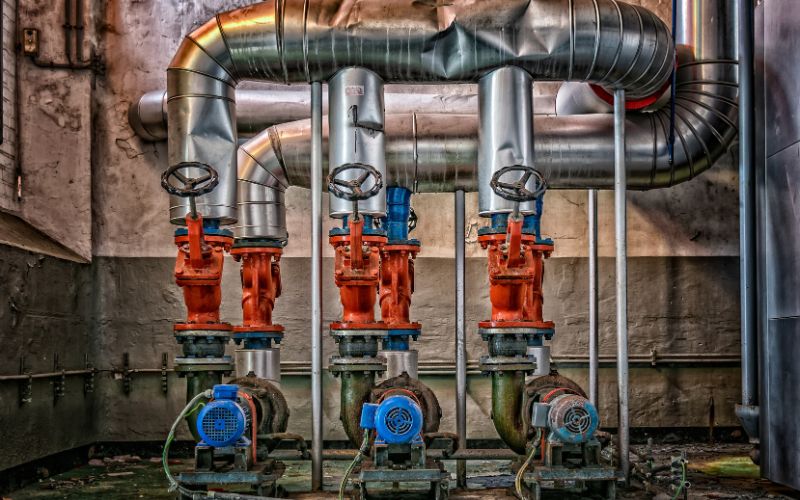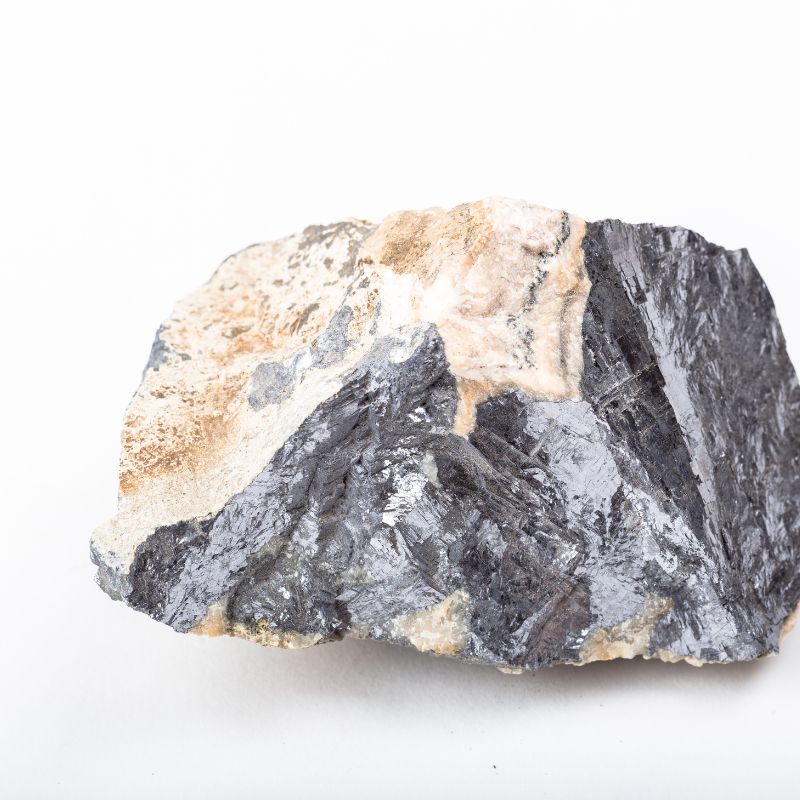Buffalo Water Quality at a Glance
multiple concerns
Is Buffalo Water Safe to Drink?
Generally Yes, With Caution – Buffalo’s water meets federal standards, but testing reveals significant contamination issues including PFAS “forever chemicals,” excessive disinfection byproducts, and chromium-6. While sourced from Lake Erie’s self-cleaning waters, 14 contaminants exceed health guidelines by up to 400 times, particularly trihalomethanes and haloacetic acids from chlorine treatment.
⚠️ Key Concerns for Buffalo Residents
- PFAS “Forever Chemicals”: PFOA, PFOS, and PFHxS detected at levels 3-400 times above health guidelines
- Disinfection Byproducts: Trihalomethanes at 259x health guidelines, haloacetic acids at 372x guidelines
- Chromium-6: Cancer-causing hexavalent chromium detected at 3.5 times health guidelines
- Arsenic: Carcinogenic arsenic found at 67 times above health guidelines
Read the full report below for detailed analysis, city-specific data, and actionable recommendations for Buffalo residents.
Buffalo – New York – Water Quality Report 2025: PFAS Testing, Infrastructure Concerns & Safety across your city
Buffalo Water Authority operates a comprehensive municipal system serving over 275,000 residents in Buffalo and surrounding communities. Established in 1868, Buffalo Water oversees an extensive network including approximately 900 miles of water mains, multiple pumping stations, and the Colonel Ward Treatment Plant on the shores of Lake Erie. The system delivers approximately 70 million gallons of water daily through one of the Great Lakes region’s most established infrastructure networks.
Buffalo draws its drinking water exclusively from Lake Erie, the shallowest of the Great Lakes with an average depth of 62 feet and the shortest detention time at 2.6 years. The water intake is strategically positioned in the Emerald Channel, away from the Buffalo River discharge and potential contamination sources. Despite comprehensive treatment processes, recent testing reveals significant contamination concerns including PFAS “forever chemicals,” excessive disinfection byproducts, and multiple contaminants exceeding health guidelines by substantial margins.

Buffalo Water Quality: Current Status (2024-2025)
Latest Testing Results
- Federal Compliance: Buffalo Water Authority meets all federal health-based drinking water standards as of the latest EPA assessment (April-June 2024), maintaining compliance with EPA and New York Department of Health regulations.
- Contaminant Concerns: Despite federal compliance, 14 contaminants were detected above health guidelines, with some exceeding recommendations by up to 400 times, including PFAS chemicals, disinfection byproducts, and carcinogens.
- Lead Levels: Recent testing shows 90th percentile lead levels of 2.7 parts per billion (ppb), well below the EPA action level of 15 ppb but still present due to lead service lines in older neighborhoods.
Lake Erie Source Water
- Strategic Intake: Water drawn from the Emerald Channel of Lake Erie, positioned through a mile-long tunnel to avoid potential contamination sources and ensure optimal raw water quality.
- Natural Advantages: Lake Erie’s shallow depth (62 feet average) and short detention time (2.6 years) allows quick flushing of contaminants, with particles binding to sediment during turbulent periods.
- Source Monitoring: Continuous water quality monitoring at the intake, with additional sampling for algal toxins, industrial pollutants, and emerging contaminants like PFAS.
Comprehensive Treatment Process
- Multi-Barrier Approach: Colonel Ward Treatment Plant utilizes coagulation, flocculation, sedimentation, filtration, and disinfection, though disinfection byproducts remain a significant concern.
- Chemical Treatment: Process includes polyaluminum chloride coagulation, activated carbon for taste and odor, chlorine disinfection creating trihalomethanes, and fluoride for dental health.
- Corrosion Control: Orthophosphate treatment helps prevent lead and copper leaching, though lead service lines throughout the system continue to pose risks.
Infrastructure Improvements
- Pipeline Replacement: Ongoing replacement of aging water mains throughout the 900-mile distribution system, prioritizing areas with frequent breaks and oldest infrastructure.
- Lead Service Line Program: Active inventory and replacement initiative targeting lead service lines throughout the system, with priority for childcare facilities and vulnerable communities.
- Monitoring Technology: Deployment of water quality sensors throughout the distribution system, enabling detection of water quality changes and potential contamination events.
Community Protection Programs
Buffalo provides resident support including water testing services, educational outreach, and assistance programs for eligible households. The Replacement of Lead in Water (RLIW) Program offers support for lead pipe replacement, while ongoing infrastructure investments target historically underserved neighborhoods. However, residents should be aware that while water meets federal standards, significant contamination issues including PFAS chemicals, disinfection byproducts exceeding health guidelines by hundreds of times, and the presence of carcinogens like arsenic and chromium-6 make filtration highly recommended for optimal health protection.
Recommendations for Buffalo Residents

Request Water Testing
Contact Buffalo Water Authority at (716) 847-1065 or visit buffalowater.org to request water testing. Given the detection of 14 contaminants above health guidelines, testing is recommended for all residents, especially those in homes built before 1986.

Apply for RLIW Program
Enroll in the Replacement of Lead in Water (RLIW) Program for assistance with lead service line replacement. Visit buffalowater.org or call (716) 847-1065 for program information and eligibility requirements.

Install Certified Filters
Use NSF-certified filters for PFAS removal (Standard 53 for lead, activated carbon for PFAS and disinfection byproducts) for all drinking and cooking water. Given the significant contamination concerns, filtration is highly recommended for all Buffalo residents.

Run Cold Water First
If water has been sitting in pipes for several hours, run cold water for 3-5 minutes before consumption. Always use cold water for drinking and cooking, as hot water can contain higher levels of lead and other metals.

Report Water Issues
Contact Buffalo Water Customer Service at (716) 847-1065 for water main breaks, low pressure, or quality concerns. For after-hours emergencies, call the 24-hour water emergency line at (716) 851-4747.
Quality News About Your Water
Get the comprehensive water quality news coverage you need with our dedicated US Water News Service. From coast to coast, we deliver in-depth reporting and expert analysis on PFAS contamination, EPA regulatory changes, infrastructure developments, and emerging water safety issues affecting communities nationwide. While mainstream media only covers the biggest stories, we provide the detailed, ongoing coverage that helps you understand the full scope of America’s water challenges. Whether you’re a concerned citizen, water professional, or community leader, our daily updates and analytical insights keep you informed about the issues that matter most to public health and environmental safety.
Frequently Asked Questions
Is Buffalo’s tap water safe to drink?
Buffalo’s tap water meets all federal and state drinking water standards and undergoes comprehensive treatment at the Colonel Ward Treatment Plant including coagulation, filtration, and disinfection.
However, recent testing reveals significant concerns: 14 contaminants exceed health guidelines, with some by up to 400 times. PFAS “forever chemicals” are present, along with excessive disinfection byproducts, arsenic at 67 times health guidelines, and chromium-6. While federally compliant, these contamination levels make filtration highly recommended, especially for families with children or pregnant women. Lead service lines in older homes remain an additional concern.
How can I check for lead pipes in my home?
Buffalo Water Authority maintains records of known lead service lines, but many remain unidentified. To check your home:
1. Locate your water service line where it enters your home (usually in the basement). Lead pipes appear dull gray, are soft enough to scratch with a coin, and won’t attract a magnet.
2. Contact Buffalo Water at (716) 847-1065 to schedule a service line inspection.
3. Check your home’s age – properties built before 1940 are most likely to have lead service lines, though some were installed through the 1980s.
Buffalo’s RLIW Program provides assistance for lead service line replacement, with support available for eligible residents.
How does Buffalo treat Lake Erie water?
Buffalo uses a multi-step treatment process at the Colonel Ward Treatment Plant:
• Coagulation and flocculation: Polyaluminum chloride binds particles together for removal
• Sedimentation: Particle clusters settle out in large basins
• Filtration: Water passes through granular activated carbon and sand filters
• Disinfection: Chlorine eliminates harmful bacteria and viruses but creates disinfection byproducts
• Corrosion control: Orthophosphate helps prevent lead and copper leaching from pipes
• Fluoridation: Fluoride added for dental health benefits
Despite this comprehensive treatment, significant contamination concerns remain, including PFAS chemicals and excessive disinfection byproducts from the chlorination process.
What about algal blooms in Lake Erie?
Lake Erie experiences seasonal harmful algal blooms (HABs) that can produce toxins. Buffalo has implemented safeguards:
Monitoring and Early Detection:
• Continuous automated monitoring at the water intake
• Testing for microcystin and other algal toxins during bloom season
• Participation in regional monitoring programs
Treatment Capabilities:
• Activated carbon treatment can remove algal toxins
• Ability to adjust water intake depth to avoid bloom concentrations
• Enhanced treatment protocols during bloom season
Buffalo’s eastern Lake Erie location typically experiences fewer severe blooms than the western basin, and the treatment plant has effective safeguards against algal toxins.
Contaminants of Concern

Lead
Source: Lead service lines and plumbing in homes built before 1986; Buffalo has lead service lines throughout the distribution system
Health Effects: Developmental delays in children, reduced IQ, learning difficulties, kidney problems, increased blood pressure in adults
Current Levels: 90th percentile value of 2.7 ppb, well below EPA action level of 15 ppb EPA Limit: Action level 15 ppb, but no level of lead is considered safe

PFAS “Forever Chemicals”
Source: Industrial contamination, firefighting foam, consumer products; PFAS chemicals persist in the environment and accumulate in the body
Health Effects: Cancer, liver damage, immune system dysfunction, endocrine disruption, developmental delays, cardiovascular harm
Current Status: Multiple PFAS detected including PFOA (11x health guidelines), PFOS (3.5x guidelines), and PFHxS (400x guidelines); no level considered safe
Disinfection Byproducts
Source: Formed when chlorine disinfectant reacts with organic matter in Lake Erie water during treatment process
Health Effects: Increased cancer risk, reproductive harm, developmental problems during pregnancy
Current Levels: Total trihalomethanes at 259x health guidelines, haloacetic acids at 372x guidelines, individual compounds like bromodichloromethane at 178x guidelines
Carcinogens
Source: Industrial contamination and natural occurrence in Lake Erie source water
Health Effects: Increased cancer risk, organ damage, cardiovascular problems
Current Status: Arsenic detected at 67x health guidelines, chromium-6 at 3.5x guidelines; both are potent carcinogens with no safe exposure level
Please read – our information
The information presented on cleanairandwater.net is compiled from official water quality reports, trusted news sources, government websites, and public health resources. While we strive for accuracy and thoroughness in our presentations, we are not scientists, engineers, or qualified water quality professionals.
Our mission is to present water quality information in an accessible, real-world format that helps people understand what’s in their water and make informed decisions about their health and safety. We believe that complex environmental information should be available to everyone in a format that’s easy to understand.
We make every effort to ensure our content is current and accurate, but we cannot guarantee that all information is complete or error-free. This website should not replace official communications from your local water utility or health department. We always recommend consulting official sources for the most up-to-date information regarding your specific water system.
Clean Air and Water is not liable for any unintentional errors, omissions, or outdated information. The content on this site is provided for informational purposes only and should not be considered professional advice.


